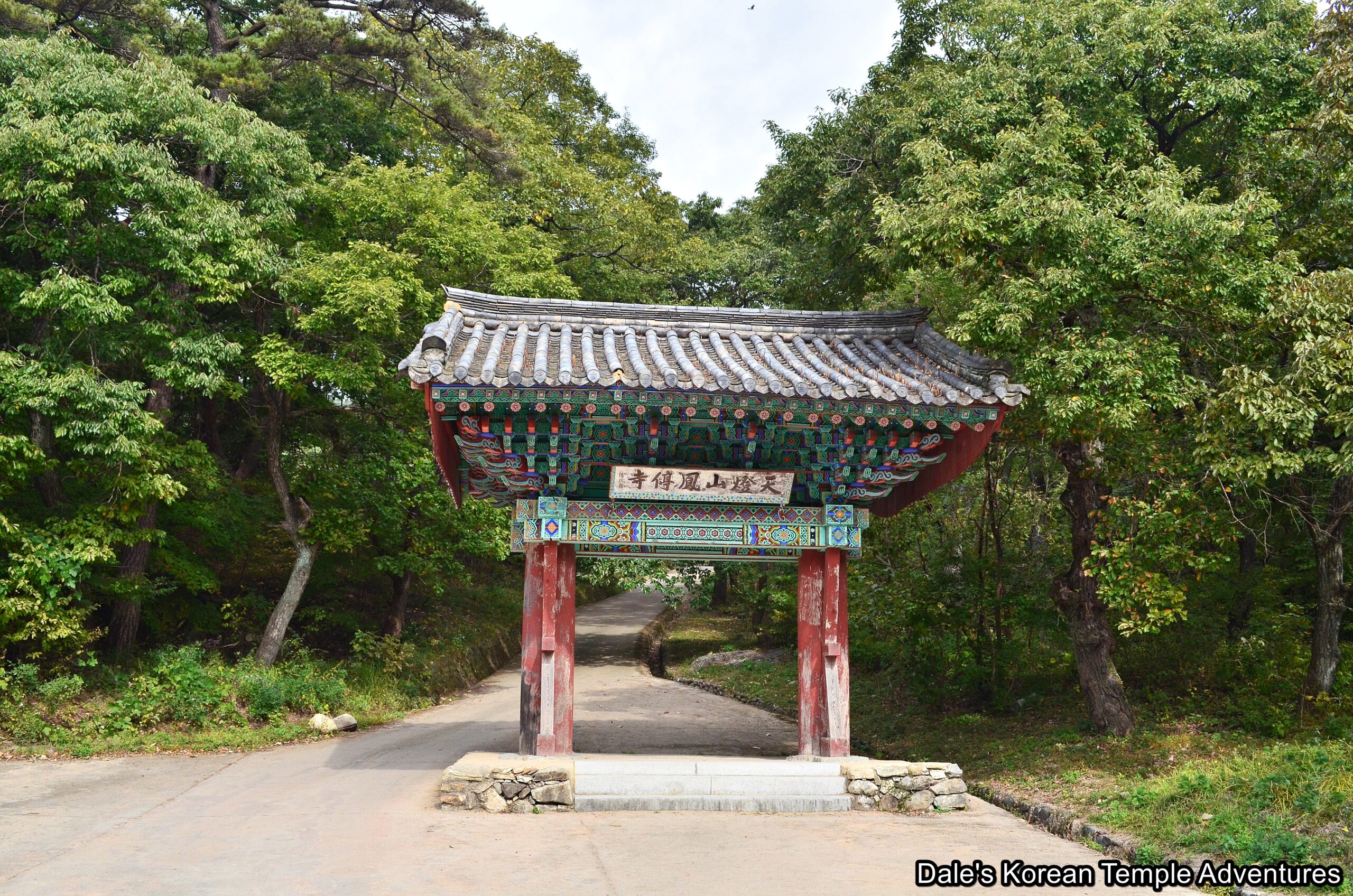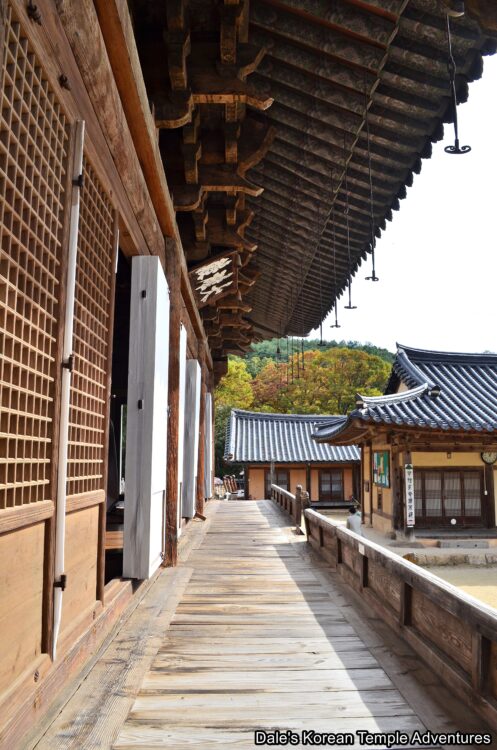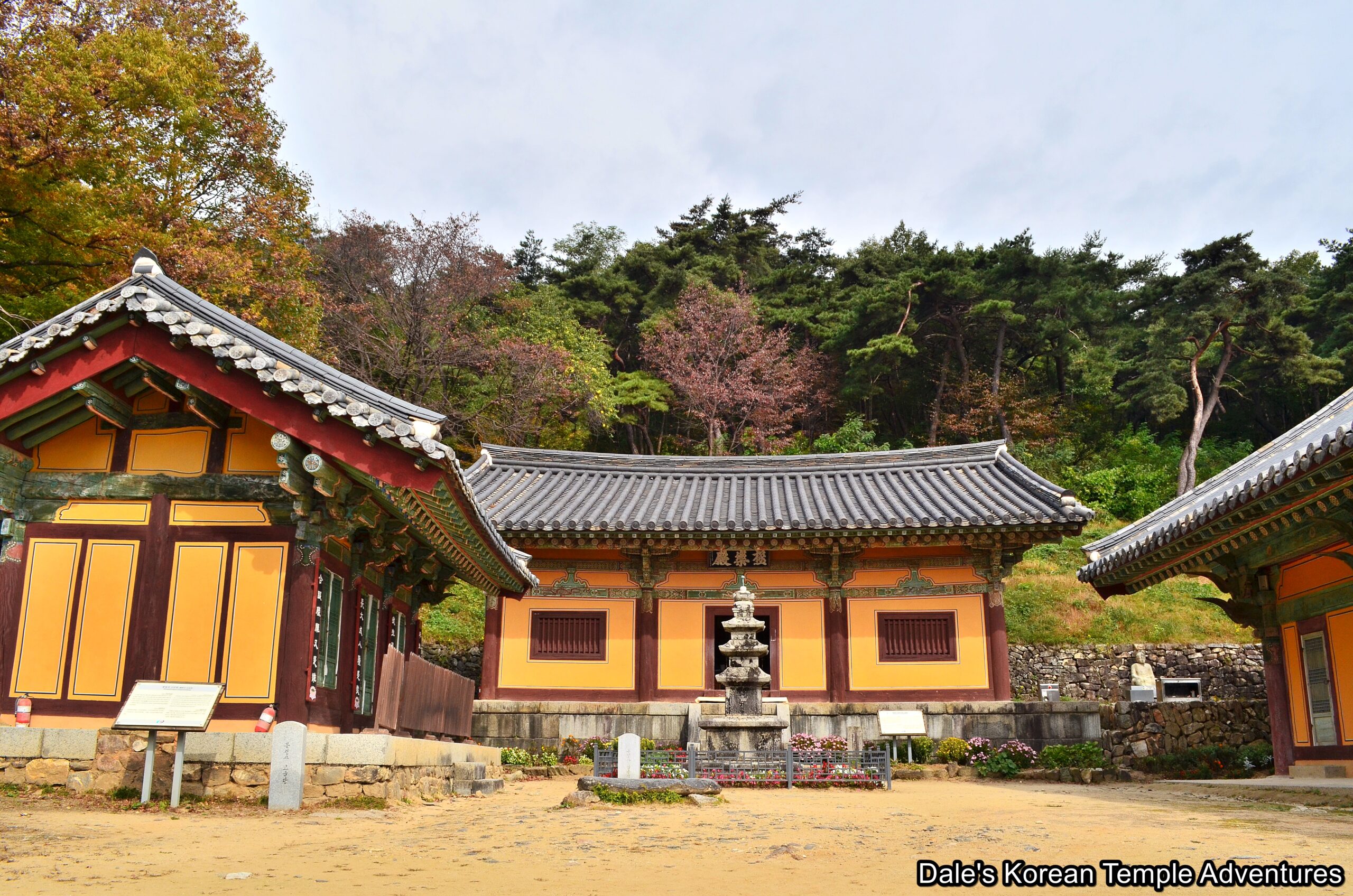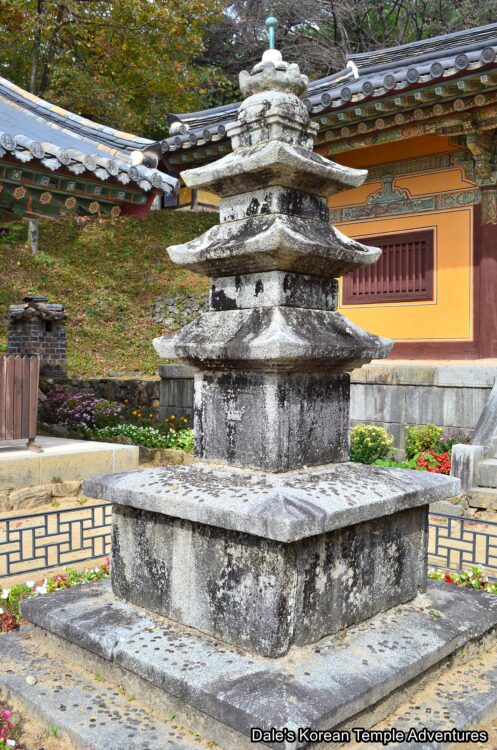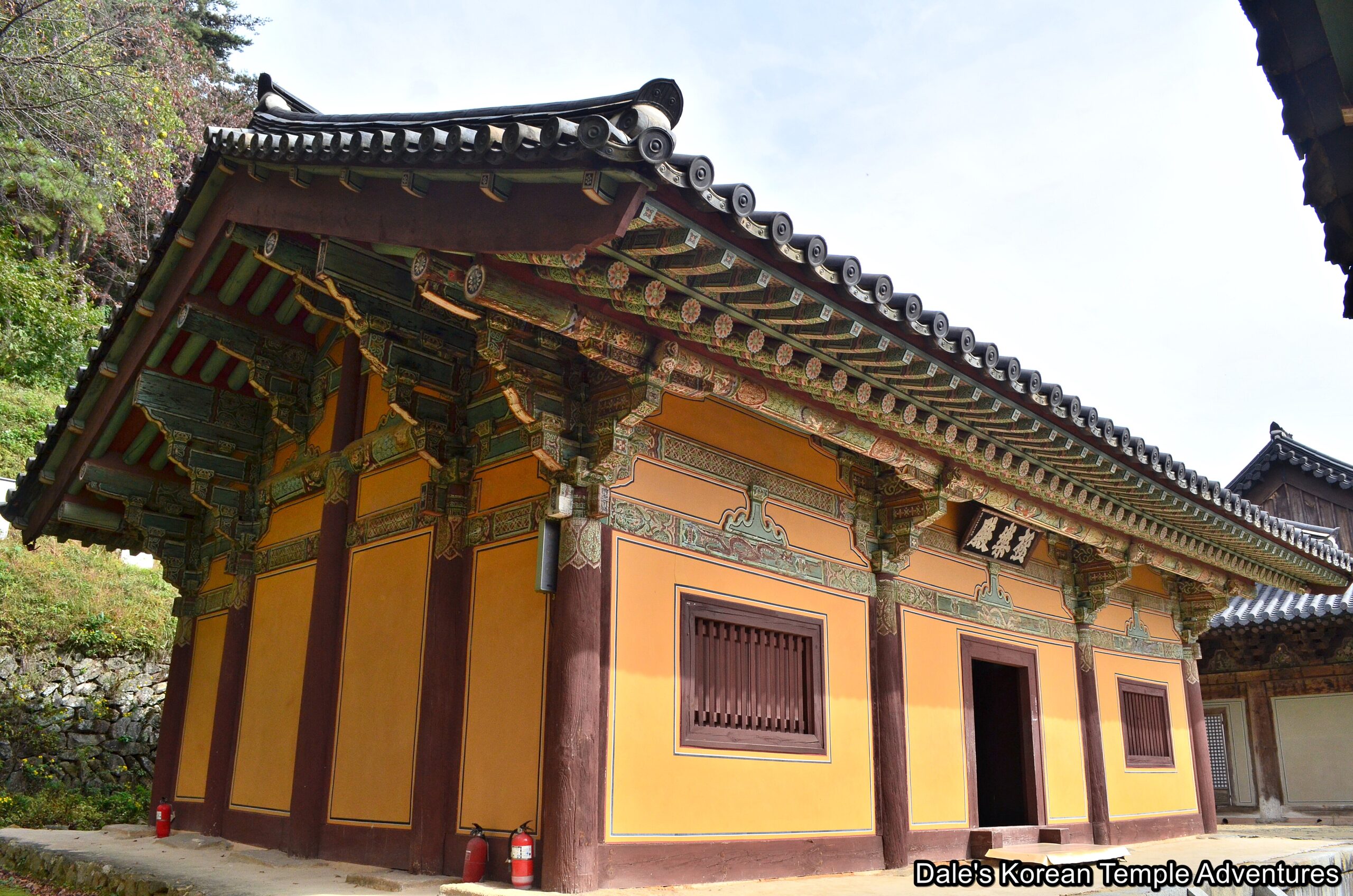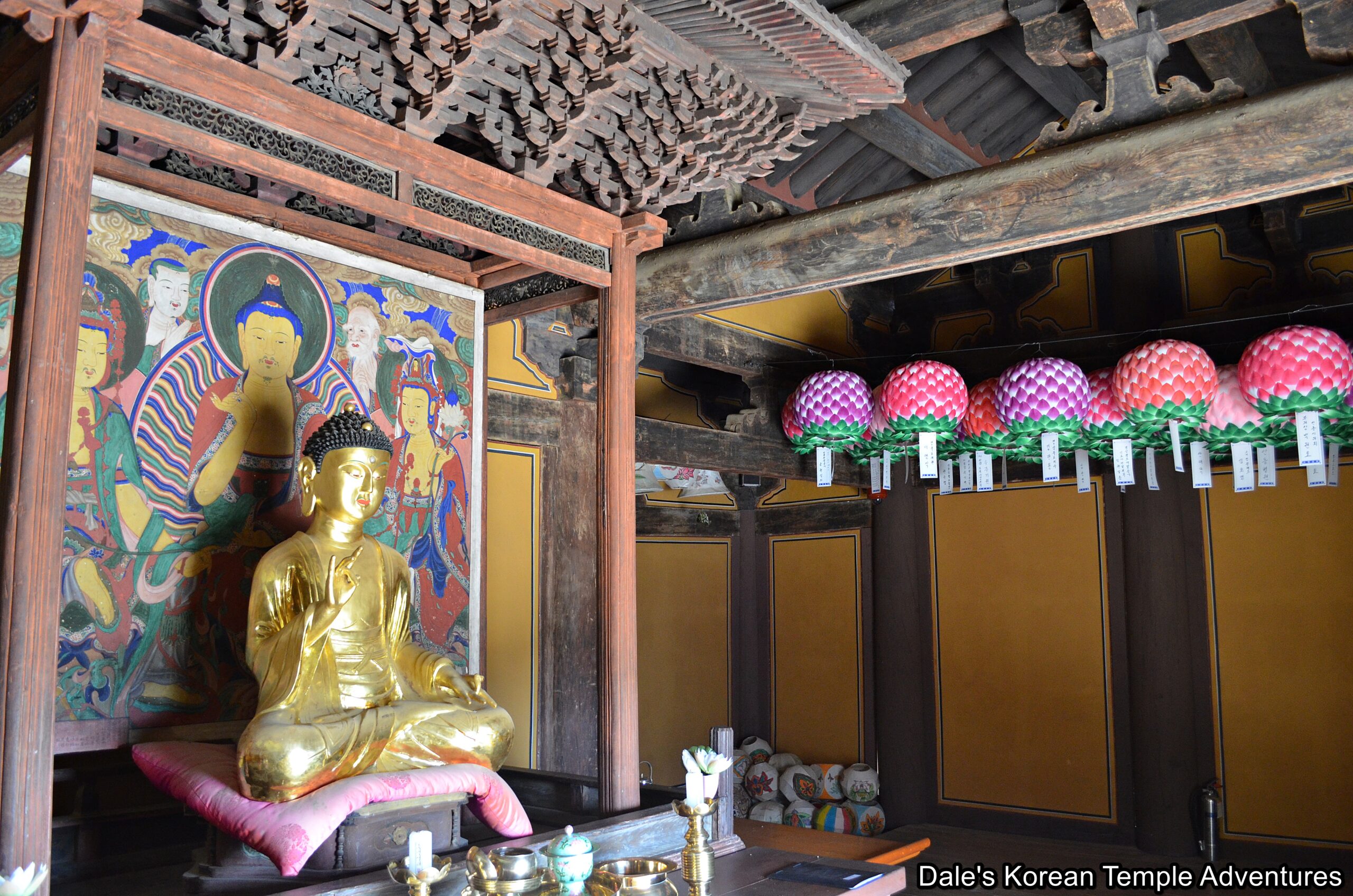Bongjeongsa Temple – 봉정사 (Andong, Gyeongsangbuk-do)
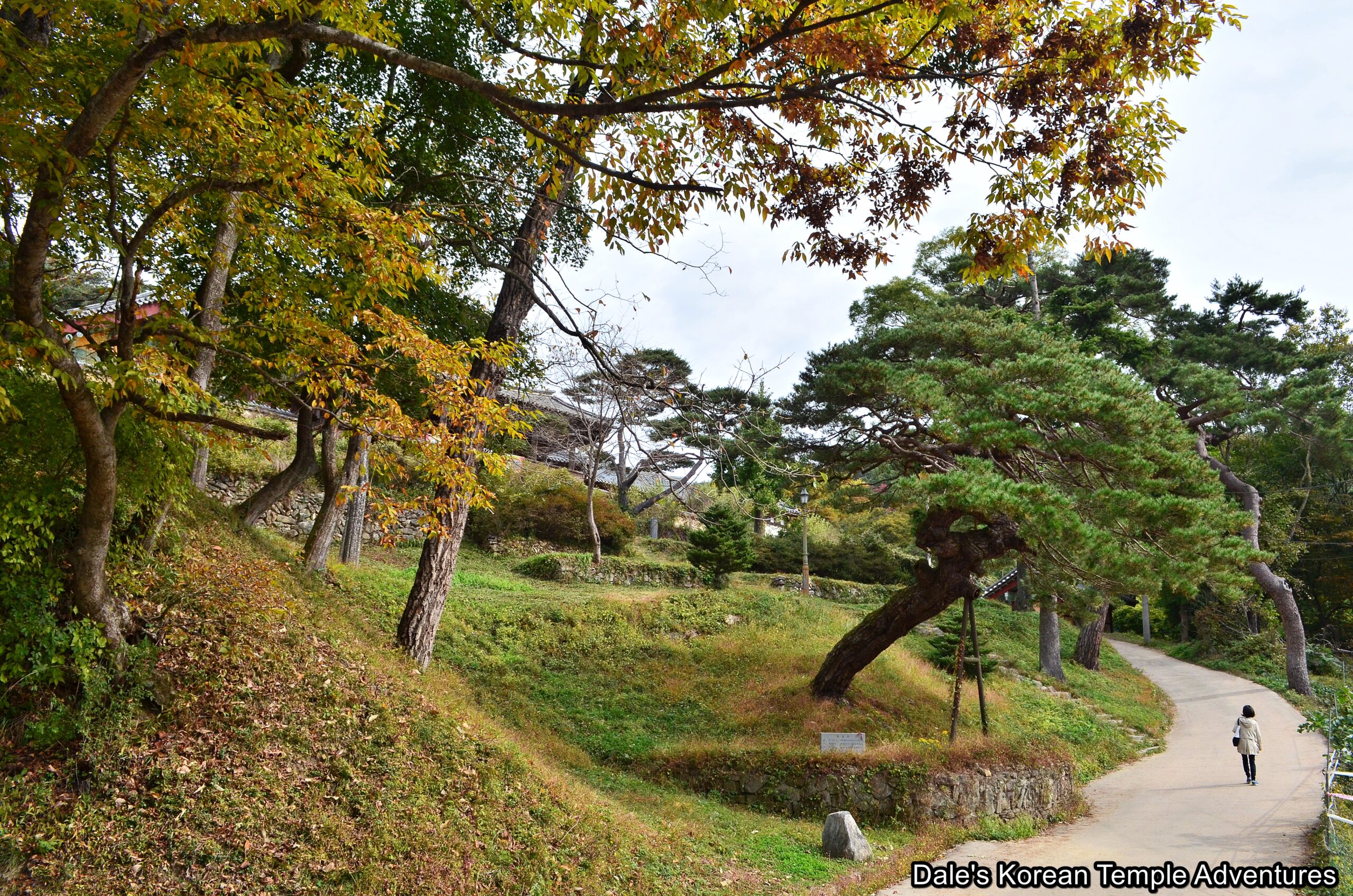
Temple History
Bongjeongsa Temple, which is located in Andong, Gyeongsangbuk-do, was first built in 672 A.D. However, there is some dispute as to who first built Bongjeongsa Temple. According to the Yangbeopdang-jungsu-gi, the founder of Bongjeongsa Temple is the famed temple builder, Uisang-daesa (625-702 A.D.). However, according to the Sangnyangmun records of the historic Geukrak-jeon Hall, the temple’s founder was Neungin-daedeok (a disciple of Uisang-daesa). These two aforementioned documents, which document the history of Bongjeongsa Temple, are the two oldest documents regarding the foundation of a temple in Korea. However, it seems as though Neungin-daedeok is the more probable founder of Bongjeongsa Temple. According to the Samguk Yusa (Memorabilia of the Three Kingdoms), and the temple first founded by Uisang-daesa upon his return from Tang China, was Buseoksa Temple. Buseoksa Temple was founded in 676 A.D. So since Bongjeongsa Temple was founded four years earlier than Buseoksa Temple, it seems most likely that Neungin-daedeok built Bongjeongsa Temple.
The name of the temple is actually related to where it’s located. Bongjeongsa Temple is located on the southern slopes of Mt. Cheondeungsan (575.9m). Originally, Mt. Cheondeungsan was called Mt. Daemangsan. When the monk Neungin-daedeok was younger, he meditated in a rocky cave on Mt. Cheondeungsan (formerly Mt. Daemangsan). During this time, a Bicheon (Flying Heavenly Deity) visited Neungin-daedeok because it admired the way in which the monk was meditating. The Bicheon gave Neungin-daedeok a lantern which would help illuminate the dark cave. Based on this story, the mountain was renamed Mt. Cheondeungsan, which literally means “Heaven’s Lantern Mountain,” in English; and the cave was named Cheondeung-gul, or “Heaven’s Lantern Cave,” in English.
More devote than ever, Neungin-daedeok continued to grow spiritually within Buddhism. As such, Neungin-daedeok (some sources say Uisang-daesa) decided that he wanted to found a temple. He used his spiritual powers to create a phoenix with a piece of paper and released it in hopes of finding a future temple site. The paper phoenix flew through the sky and landed on the present-day site of Bongjeongsa Temple. So the name of the temple, Bongjeongsa Temple, means “Phoenix Bower Temple,” in English.
Since the temple’s creation in 672 A.D., no early records of the temple’s history were made/found. However, with that being said, Bongjeongsa Temple was a well-respected temple during the Goryeo Dynasty (918-1392) and, declined like most other temples, during the Confucian centred Joseon Dynasty (1392-1910). Later, Bongjeongsa Temple was only partially damaged by the invading Japanese during the Imjin War (1592-1598).
More recently, and in 1999, Queen Elizabeth II visited Bongjeongsa Temple and the city of Andong. Bongjeongsa Temple is home to two National Treasures, six Korean Treasures, and one Cultural Properties Materials. And in 2018, alongside six other temples like Magoksa Temple and Tongdosa Temple, Bongjeongsa Temple was named a UNESCO World Heritage Site.
Temple Layout
You first approach Bongjeongsa Temple up a trail that winds its way through a mature pine tree forest. You’ll pass by the Iljumun Gate, or “One Pillar Gate,” in English, until you eventually arrive at the temple parking lot. Just past the temple parking lot, you’ll get your first amazing view of Bongjeongsa Temple by way of the Manse-ru Pavilion. You’ll gain admittance to the rest of the temple grounds by passing under the Manse-ru Pavilion. Emerging on the other side, and up an uneven set of stairs, you’ll finally be standing squarely in the centre of the main temple courtyard. Just behind you, and on the second story of the Manse-ru Pavilion, you’ll find the Buddhist musical instruments like the fish drum and metal cloud gong.
Straight ahead of you stands the Daeung-jeon Hall. This main hall dates back to the early Joseon Dynasty (1392-1910). The natural wood exterior is complimented by a heavily accented roof. Also, the wooden rails that skirt the wooden platform just in front of the Daeung-jeon Hall are usually missing from more modern main halls. As for the interior, and resting on the main altar, are a triad of statues centred by Seokgamoni-bul (The Historical Buddha). This statue is flanked by Munsu-bosal (The Bodhisattva of Wisdom) and Bohyeon-bosal (The Bodhisattva of Power). Above the head of the main altar statues is a beautiful dragon relief, and the interior ceilings and beams are adorned with historic dragon and floral murals. The Daeung-jeon Hall is National Treasure #311.
To the right of the Daeung-jeon Hall is the Muryanghaehoe, which is the monks’ quarters. And to the left of the Daeung-jeon Hall is the Hwaeom Gangdang, which is a lecture hall for monks that dates back to 1588. This simple looking hall is Korean Treasure #448. And through a pathway that leads from the Daeung-jeon Hall to the Geukrak-jeon Hall, you’ll find a weathered statue of Seokgamoni-bul.
Just past this statue, and you’ll find yourself in the presence of the oldest wooden building in Korea: the Geukrak-jeon Hall. According to the Sangnyangmun that was discovered during the shrine hall’s reconstruction in 1972, it states that the Geukrak-jeon Hall was repaired in 1363. Typically, traditional Korean structures of this time were usually repaired about one hundred to one hundred and fifty years after they were initially constructed, so this would place the date of the Geukrak-jeon Hall to the early 1200s. This predates the Daeung-jeon Hall at Sudeoksa Temple that was established in 1308. The exterior walls to this hall are plainly painted brown and yellow, and the architecture of the Geukrak-jeon Hall is in sharp contrast in its simplicity compared to more modern Joseon Dynasty shrine halls. There is only one door that leads into the hall with wooden slat windows on either side of the hall’s entrance. As for the interior, and sitting all alone, is a statue of Amita-bul (The Buddha of the Western Paradise). The Geukrak-jeon Hall is National Treasure #15.
Out in front of the historic Geukrak-jeon Hall is a three story stone pagoda that dates back to the Goryeo Dynasty. To the left of the Geukrak-jeon Hall is the Gogeum-dang Hall. This hall, which dates back to around 1616 when it was repaired (so the exact date of its construction is still unknown), was once used as an annex to enshrine a Buddhist statue. Presently, it’s inhabited by a Buddhist monk. The Gogeum-dang Hall is Korean Treasure #449.
To the left of the Geukrak-jeon Hall is a colourful bell pavilion that houses a rather large bronze bell. Just up the hillside, and up an unmarked little traveled trail, is the temple’s Samseong-gak Hall. All but for the Chilseong (Seven Stars) painting, the other two murals inside this shaman shrine hall are rather plain in design.
Of note, you should visit the temple’s museum. Housed inside this museum is Korean Treasure #1620, which is a statue of Gwanseeum-bosal that dates back to 1199. The southern Song Chinese influenced statue of the Bodhisattva of Compassion was repaired twice from between 1363-1364 and 1751 to 1753. This statue is definitely worth a visit to the Bongjeongsa Temple museum.
Admission to the temple is 2,000 won.
How To Get There
To get to Bongjeongsa Temple, you’ll first need to get to the Andong Intercity Bus Terminal. From the Andong Intercity Bus Terminal, you’ll need to take Bus #51 to get to Bongjeongsa Temple. Bus #51 leaves at 6:10/8:25/10:40/12:50/14:50/17:20/19:00 throughout the day. In total, the bus ride takes about thirty minutes.
Overall Rating: 8/10
It’s not everyday that you get to see two national treasures at a site, let alone, a Korean Buddhist temple. And yet, Bongjeongsa Temple does in fact have two national treasures. Bongjeongsa Temple is home to the presumed oldest wooden structure in Korea: the Geukrak-jeon Hall. It’s also home to the historic Daeung-jeon Hall, which is also a national treasure in its own right. Add into the mix six additional Korean Treasures, and you have more than enough reason to visit Bongjeongsa Temple in Andong.
